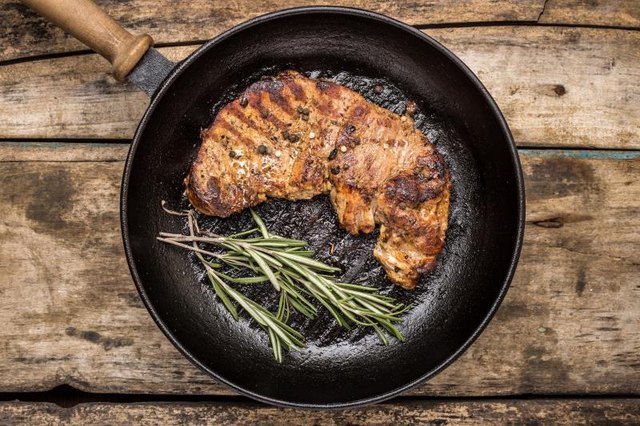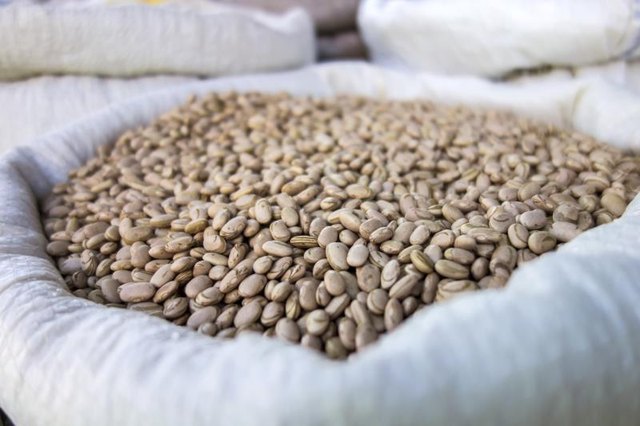It’s always the media and advertising-hyped stories of rapid and massive weight loss that get most of the attention these days (think “Biggest Loser”). It’s easy to look at these dramatic “success stories” and choose them as your role models. But it’s usually not the person who lost the most weight or who lost weight the fastest that you want to emulate. In fact, “losers” are the last people you want to listen to…When you’re looking for people and methods to model, you should pay attention to maintainers, not losers.
Maintainers are people who have lost weight and held a steady new ideal weight for at least one year. Long term maintainers are people who have kept the weight off for 3 to 5 years, and this is a remarkable achievement, given the statistics about relapse. Any time you meet someone who has achieved their ideal weight and maintained it for 5 years or more, stop everything you’re doing, pay attention and learn from them. As you meet more of them, compare notes about what they have in common.
Most commercial diet programs don’t keep track of their customers over the long term. The testimonials they publish are the most dramatic success stories which have been singled out as their poster children. From a business point of view, you can’t fault them for that, but the results you see in the ads are rarely a true reflection of the usual amount of weight loss or the duration of weight loss maintenance. That’s why the FTC requires disclaimers such as “results not typical” on so many advertisements and before and after photos.
One group dedicated to tracking maintainers is the National Weight Control Registry (NWCR). This joint collaboration of weight loss researchers was founded in 1994 by Dr. James Hill, a clinical nutrition researcher from the University of Colorado and Dr. Rena Wing, a psychologist from Brown University.
The NWCR began as a data base of men and women who had lost 30 pounds or more and maintained the loss for 1 year or more. Since its inception, the average participant has been even more successful than the entry criteria, having lost an average of 65 pounds and maintained the minimum weight loss for an average period of 5.5 years.
Information about this group has been collected through a series of surveys and interviews. Since this isn’t the controlled experimental type of research, it doesn’t prove cause and effect and is subject to flaws such as selection bias and the ever-present underreporting bias. Nevertheless, the NWCR is one of the most valuable sources of success strategies from weight maintainers currently available. Many of the strategies here in my 10 keys to maintenance are based on the findings of this group and other groups like them.
The 10 Major Keys for Successful Lifelong Maintenance
The NWCR found many similarities among successful maintainers plus a few important differences. One difference was the type of program used. Half of the maintainers lost weight on their own, half of them used commercial programs. Maintainers also used various types of nutrition programs with a variety of different macronutrient ratios and they customized their nutrition programs to suit their needs, lifestyles and dispositions.
This shows that it wasn’t a specific formal program that made the difference. It tells us that personal preference and metabolic individuality must be taken into consideration when choosing a program. No one can say that a single program is superior to all the others 100 percent of the time for 100 percent of people.
Despite the differences, the NWCR and similar survey studies reveal that maintainers have far more in common than they do different. It’s these commonalities in long term maintainers you’ll want to learn and emulate, and I have researched and listed them all for you below:
1. Maintainers follow the 7 lifestyle eating habits. The eating habits that help to keep the weight off are almost identical to the nutrition habits that take the fat off. However, in virtually all of the long term studies about weight maintenance, 7 habits in particular show up at the top of the list over and over again.
Successful maintainers:
Eat consciously. Long term maintainers are not mindless eaters. Even though healthy eating behaviors become habitual after years of repetition, successful maintainers are always vigilant and aware.
Eat breakfast every day. It’s no surprise that maintainers are breakfast eaters because strong correlations have been found between skipping breakfast and overeating or bingeing later in the day.
Eat at fast food restaurants 2 or fewer times per week. A report on dietary practices and dining out behavior published by the Center for Disease Control found that adults who ate no more than 2 times per week at fast food restaurants were more successful at maintenance.
Eat less dietary fat. Most maintainers report eating between 20% and 30% of their total calories from fat, significantly less than the national average of 35%. It’s important to consume enough of the healthy fats, but maintainers are aware that high fat foods are high calorie foods so quantities are controlled.
Eat at least 5 vegetables & fruits per day. You can never hear this often enough: Eat more fruits and vegetables. They’re great for burning the fat off, great for keeping the fat off.
Eat a high fiber diet. Successful maintainers report a high fiber intake from their high fruit and vegetable intake as well as from other natural starchy carb and whole grain sources such as beans, oats, legumes, brown rice, sweet potatoes, barley and so on.
-Eat at fast food restaurants 2 or fewer times per week. A report on dietary practices and dining out behavior published by the Center for Disease Control found that adults who ate no more than two times per week at fast food restaurants were more successful at maintenance.
Eat the same healthy foods all year-round. Maintainers eat a wide variety of foods, but they are consistent all year-round. There’s no dramatic difference between the foods eaten for maintenance because no weird or different foods are eaten for fat loss. To hold their weight steady, maintainers simply eat a little less of the same healthy foods during the fat loss phrase.
2. Maintainers get serious about weight training. The types of exercise regimes used by maintainers may vary, but in the majority of studies, maintainers reported that they used weight training to help take the weight off and continued weight training through the maintenance phase. The majority of re-gainers didn’t do weight training during the weight loss phase and most didn’t pick it up in the maintenance phase.
Years ago, I did my own informal “research” on weight training and fat loss maintenance by looking at the habits and long term results of several hundred of my personal training and coaching program graduates. They all used weight training as a part of their fat loss programs. During maintenance, I noticed that the most successful of my clients were the ones who got extremely serious about their weight training to the point that it almost became like a hobby or recreational sport to them. A few even took up bodybuilding or figure competitions.
I believe the progressive and goal-oriented nature of weight training adds a motivational spark that keeps the fire of enthusiasm burning for years after you achieve your initial weight goal. Contrary to what many believe about exercise and aging, weight training is also a recreation or sport you can enjoy for the rest of your life. There’s no other type of exercise that will do so much for you as you get older to maintain your strength, functionality, mobility, and self-confidence.
Weight lifting isn’t just for bodybuilders! The benefits are incredible, and this type of training is still not getting its proper due in today’s discussions of fat loss and lifelong maintenance.
3. Maintainers have a plan for transitioning into maintenance phase. The worst thing you can do at the time you reach your weight/body fat goal is to abruptly change by eating totally different foods and/or a dramatically different quantity of food. If your calorie reduction and food restrictions were conservative, you won’t need much of a transition period; you should be able to safely manage your calories right up to maintenance without a problem.
Remember that body weight is not the same as body fat, so don’t be alarmed if there is a small weight gain, provided your body fat percentage does not increase significantly. Sometimes you’ll gain 2 to 3 pounds as you raise calories back to maintenance (especially carb calories), but it’s usually lean tissue, water and muscle glycogen, especially if you had reduced your carbs during the fat loss phase. When your weight is stable and you’re neither gaining or losing week-to-week, you know you’re in energy balance and you’ve officially entered the maintenance phase, or if you prefer, the “lifestyle phase.
4. Maintainers have very high levels of physical activity in general. Weight loss experts have argued lately about how important exercise is for weight loss (nutrition is clearly the most important factor). But one thing that almost every expert agrees on is that exercise and high levels of activity are vital for keeping the weight off. It’s difficult. to keep weight off with no activity. It would take very tight control over caloric intake and high levels of dietary restraint to maintain a large weight loss with no training or other physical activity during the maintenance phase.
The reason maintenance is difficult without exercise is that after a large loss of bodyweight, your calorie requirement (metabolism) is lower than before. This is why many people regain—they go back to the way they used to eat. It’s an even worse idea to abruptly stop exercising along with this.
A good general guideline during maintenance is to perform 2-3 days per week of strength training, 2-3 days/week of formal moderate to intense cardio training and keep up an active lifestyle in general (lots of walking and recreational activity). Adjust your training and activity level as needed based on your results just like you did during the fat loss phase. Why be bound by rigid rules or confusing research? Regular progress check-ups for weight, body fat, measurements and visual appearance will tell you without a shred of doubt. And on the flip side of being more physically active…
5. Maintainers decrease sedentary activities. Long term maintainers are much more active than re-gainers, but they also make a conscious effort to cut back on sedentary recreational activities. It’s not just what activities you do that count, it’s what you don’t do. When you stop doing something sedentary, that will create a vacuum that begs to be filled, so to make the change stick, swap out the time you used to spend watching TV, surfing the web, playing video games or just lounging around for some kind of physical activity.
The best part of this strategy is that the new activity could still be recreational and fun, it simply has to burn some calories. Think about all the possibilities. This could be a great opportunity to take up some new activities, hobbies, or sports. These may not take the place of your formal exercise program (including both strength and cardio), but it will make a difference in helping you stay lean if you make it a part of your new lifestyle.
If you’re serious about maintenance, you’re going to need to stay active. But there’s no law that says you have to be indoors on a treadmill seven days a week, unless you want to.
6. Maintainers continue diligent self-monitoring. Research has proven over and over again that people who monitor their progress have a higher chance of succeeding at reaching their body fat goals. What clinches the deal is that self-monitoring of body weight and other measures of progress increases your chances for successful maintenance as well.
Among maintainers, the most 5 common self-monitoring methods include: tracking body weight, tracking calories, planning meals, tracking dietary fat intake, & measuring the amount of food.
Among the NWCR maintainers who lost 65 pounds or more and kept if off for at least 5 years, 75% of them reported weighing themselves at least once a week. Many weighed themselves daily. Once you hit your target weight, don’t put that scale away just yet! Weighing yourself not only helps you take the weight off, it helps you keep it off.
7. Maintainers respond quickly to counteract weight gain. One of the reasons that self-monitoring behaviors help so much is that they give you an early warning system to help put a lid on the weight creep. Putting a stop to creeping bodyweight also requires a certain mindset. The first part is a low level of tolerance for weight gain. Most successful maintainers have a rule for how much weight they’ll allow themselves to gain before they spring into corrective action.
Four pounds is a commonly cited figure. This makes perfect sense because most people say their normal weight fluctuation is about two to three pounds. As soon as they exceed that limit, they leap into action. When the early warning alarm goes off, they immediately go back into a caloric deficit by reducing food portions or increasing the number of calories burned through formal exercise.
The other side of killing the weight creep monster while it’s small is having high standards for the type of physique you want to maintain or develop. The majority of maintainers believe that it’s not okay to be overweight and it’s dangerous to be obese. Other people, usually those who are struggling with their weight, argue that you have to accept yourself the way you are to be mentally happy and healthy. I don’t think anyone would disagree with that, except that this is “either-or” thinking. Fat and person are separate things so you don’t have to accept them together. Fat is not a person, it’s a temporary physical condition. The person you are is much more than a mass of biological tissue. You can like and accept yourself as a person and at the same time proclaim that high body fat is unacceptable.
Unrealistic standards are certainly a possibility, so set yours based on what you really want, not what society says or implies is the ideal. Raising standards doesn’t mean getting skinnier and skinner. High standards include excellent body composition and all the other aspects of fitness including strength, muscularity, endurance, flexibility and aerobic capacity. But almost all of us are so far away from our true physical potential and have so much room for improvement that it’s silly to downsize our goals and dreams because someone else thinks they’re unrealistic.
8. Maintainers continue using social support. Ongoing social support is one of the secrets of successful maintenance. Not just casual social support, but professional coaching or support as well. If you choose to continue with coaching, counseling, or membership in some kind of fitness group, you can rest assured it will be one of the best investments you ever make. Not only do maintainers seek support from professionals, they also use their natural social network to help them cope with personal problems. Re-gainers on the other hand, lack coping skills, they try to handle problems alone and they lapse back into using food as a coping mechanism.
Whether or not you work with a professional into the maintenance phase is your decision, but if you’ve ever relapsed in the past, give serious consideration to using formal support after you reach your ideal weight. Most of the people who get past the 1-year mark have good prospects for maintaining their new weight for the long term, so having a coach or trainer for that period would be a great idea.
9. Maintainers become coaches and role models. Support is a circle, not a 1-way transaction. Someone gives support, someone receives it and then the receiving party either returns the favor to the same person or “pays it forward” to someone else. One of the best maintenance strategies is becoming a coach and support partner after you achieve your goals. Not only will you be returning the goodwill you received from others when you needed help, you’ll be keeping yourself motivated by taking a leadership position where others are looking up to you. To avoid disappointing them, you have to be congruent and practice what you preach.
Being a coach or support friend for others could be as simple as posting your success story on a website or contributing to an online community. You might even become involved in the health and fitness business more formally. I believe that part of our purpose on this Earth is to serve other people. When you serve others, you get an incredible feeling you can’t get any other way. Emotional eaters use food as a way to make themselves feel better, but food wasn’t meant for that purpose. If you want a way to genuinely feel better, try service.
Give something back. Do it for selfish reasons if no other, because being a role model for others helps you achieve your own goals. Imagine what would happen if every person who achieved and maintained their ideal weight “paid it forward” by helping three other people reach and maintain their ideal weight. Maybe that’s just a cute idea from a movie. But maybe it’s much more.
10. Maintainers have vision. As you may have noticed, I do recommend setting short, mid and long term goals, including 12 week goals. I recommend planning by the 7-day week, and I suggest setting up your training in neatly organized 4 week blocks and 8 week cycles. I also think competitions are a great idea.
But fitness is not a 7 week or a 3-month program, it’s a lifestyle. Forgive me the cliché, but there’s no better approach to nutrition, training and health than thinking of fitness as a lifestyle. Programs and goals are just stepping stones, not the journey itself.
If the only plans you make are for winning a 12-week transformation contest or for looking good for a trip to the beach in 30 days, what’s going to keep you going after that? Even 5, 10 and 20 year goals have an ending point. What then? That’s where a vision comes into play. A vision is the big picture of what you want for your body and your health, but unlike a goal, a vision has no end point. You don’t arrive there or get it, you live it.
Putting a man on the moon before the end of the decade was a goal. The exploration and conquest of space is a vision. If there was no vision, would anyone be talking about going to Mars today? Here’s an example in the context of business: Goal: To own a health club. Vision: To build a national fitness company that inspires thousands of people to achieve their health and fitness goals. Now here are some examples in the area of fitness, sports and weight control.
Goal: To win the overall national bodybuilding championship title. Vision: To continuously improve and become the best natural bodybuilder I can be.
Goal: To complete a full triathlon. Vision: To continuously improve my performance and become the best athlete I can be.
Goal: To lose 100 pounds Vision: To easily maintain my ideal weight, improve my health, increase my quality of life and inspire other people with my success story
Each time you achieve a goal, you have to keep asking, what’s next? But if you have no vision, you’ll be at a loss for an answer. If you have a vision, the next step is an obvious and natural progression.
What’s your big picture? What’s your vision? Think about it hard and write it down. Then think about it some more and make it clearer and clearer. Vision, the never ending pursuit of new goals and personal improvement will be the driving forces that inspire, motivate and energize you for the rest of your life.
Train hard and expect success!






 , says Matheny. (FYI: Cutting 500 calories a day by eating healthier and exercising will get the job done.) But if you're trying to drop a substantial amount, that timeline can seriously delay your goal-weight gratification. Instead of getting hung up on the scale, zone in on
, says Matheny. (FYI: Cutting 500 calories a day by eating healthier and exercising will get the job done.) But if you're trying to drop a substantial amount, that timeline can seriously delay your goal-weight gratification. Instead of getting hung up on the scale, zone in on  6). Lift something heavy. We beat this drum a lot around here because, hey, strong is the new sexy. And when it comes to weight loss, more
6). Lift something heavy. We beat this drum a lot around here because, hey, strong is the new sexy. And when it comes to weight loss, more 



